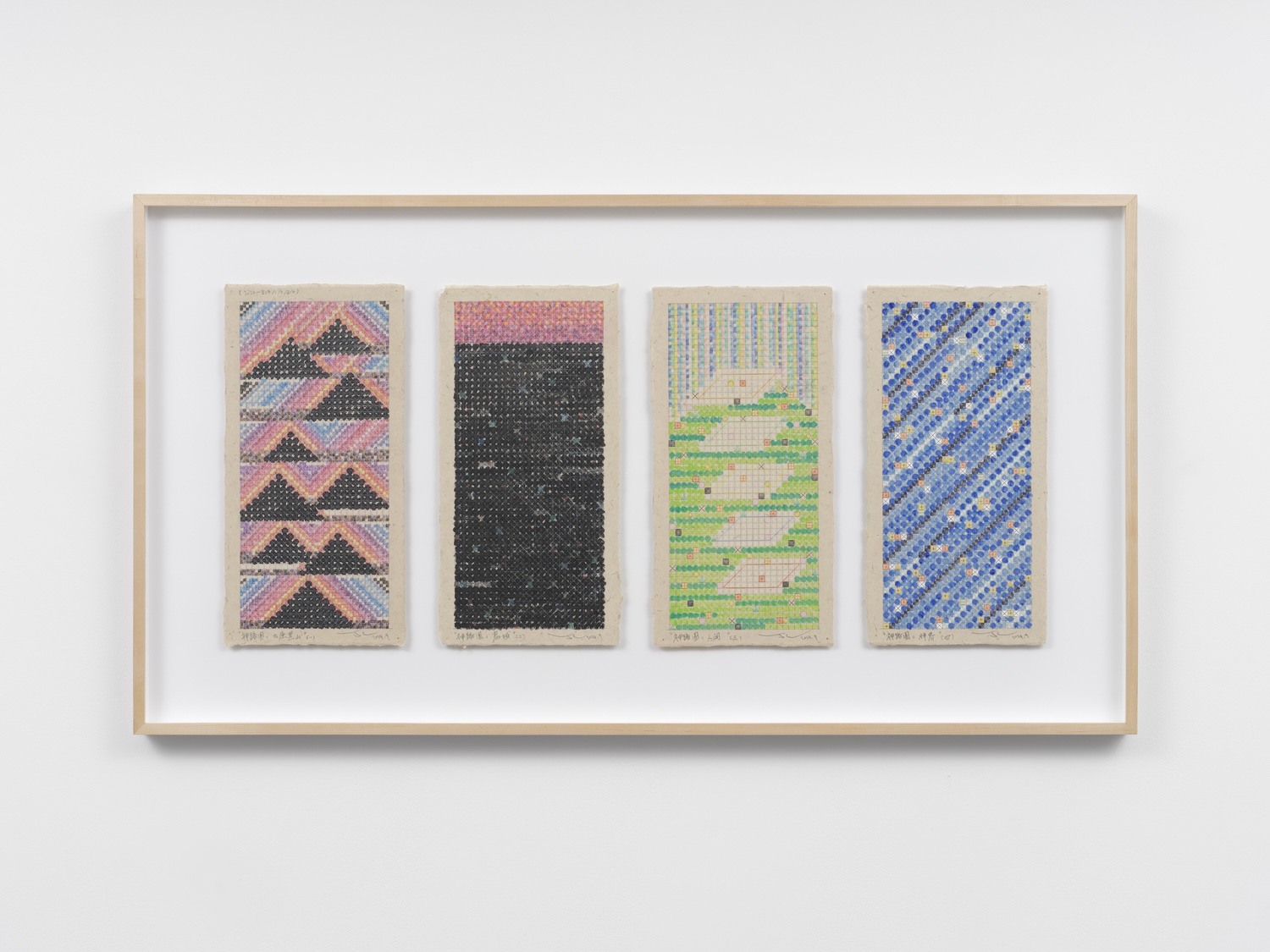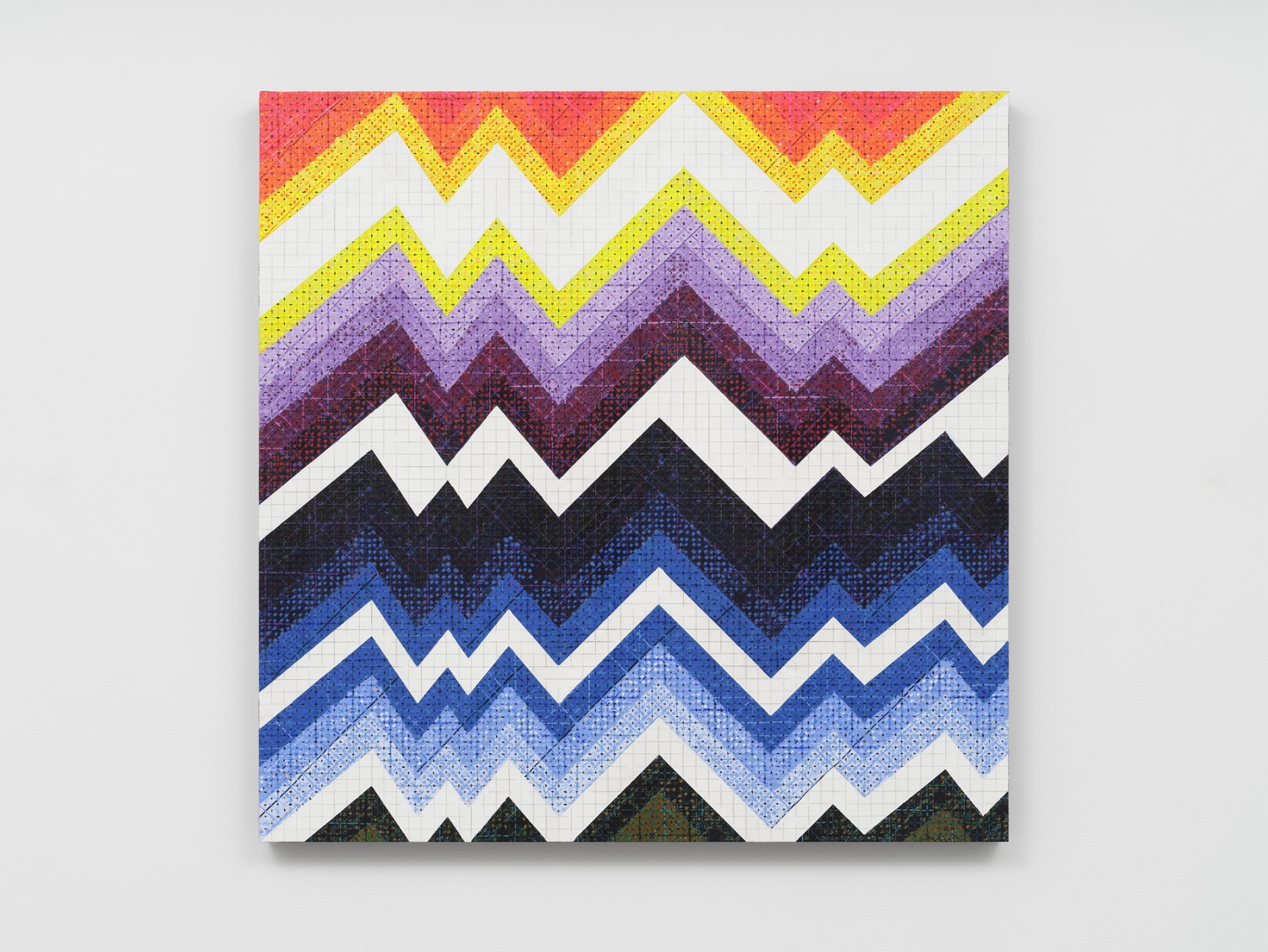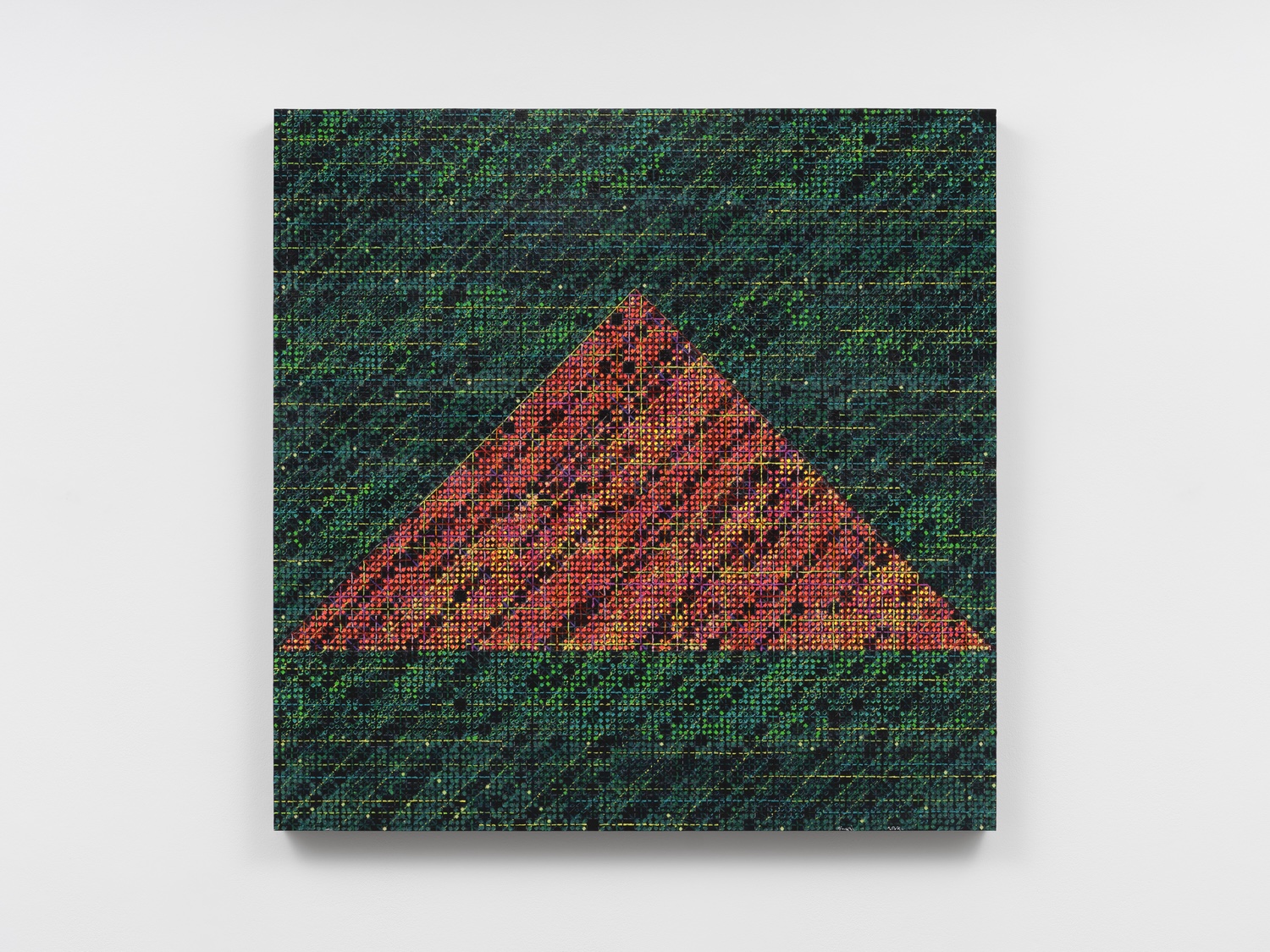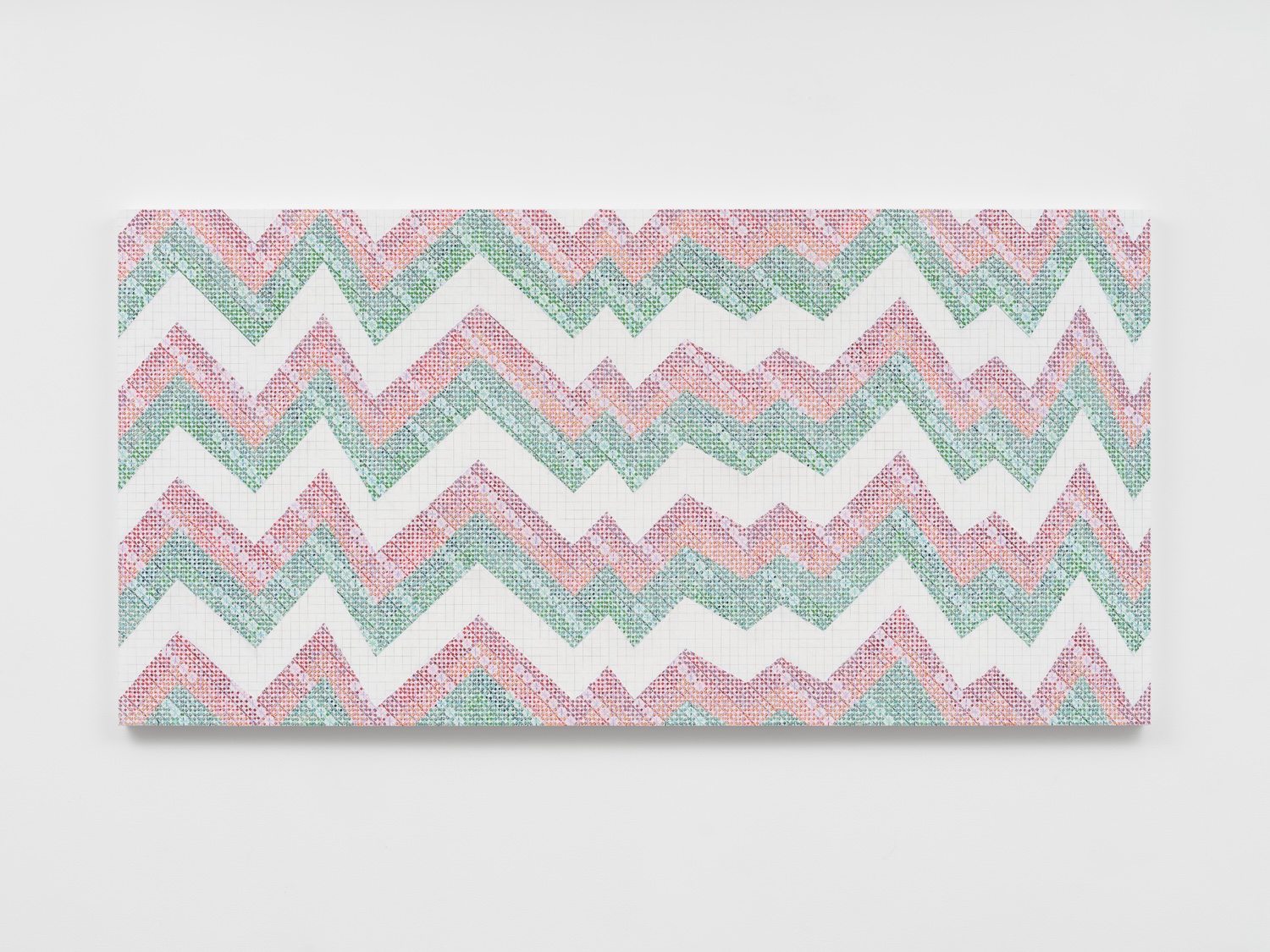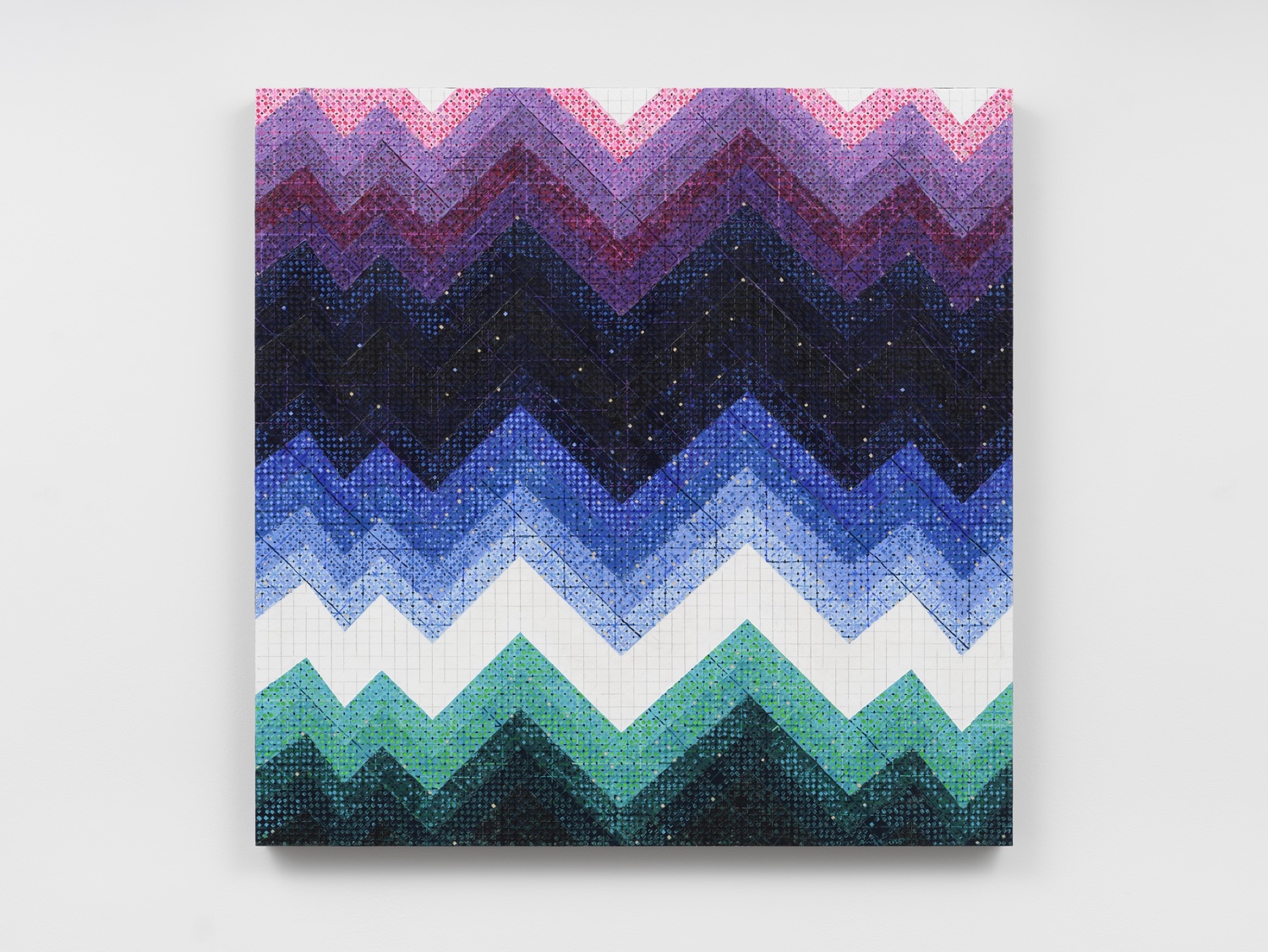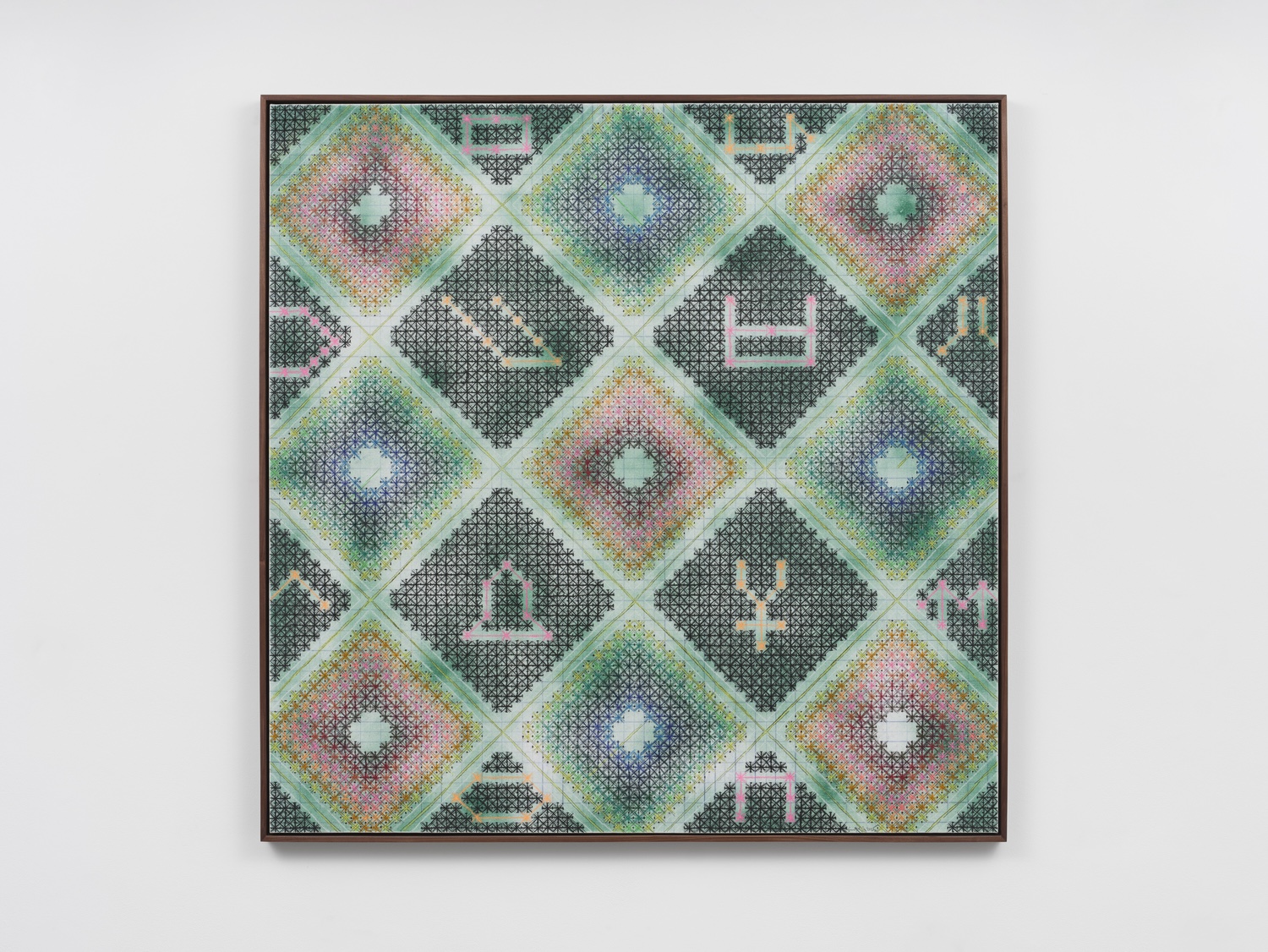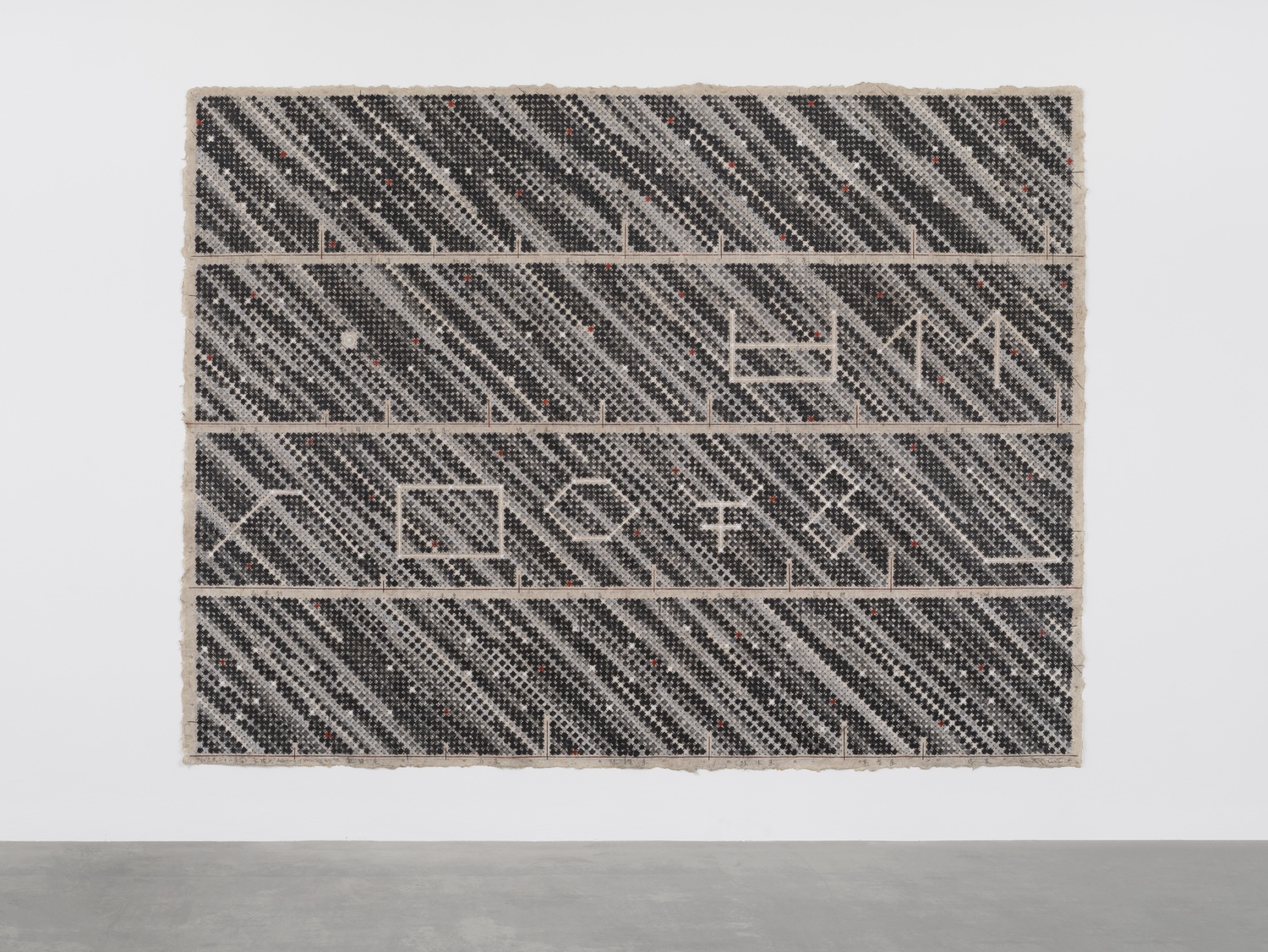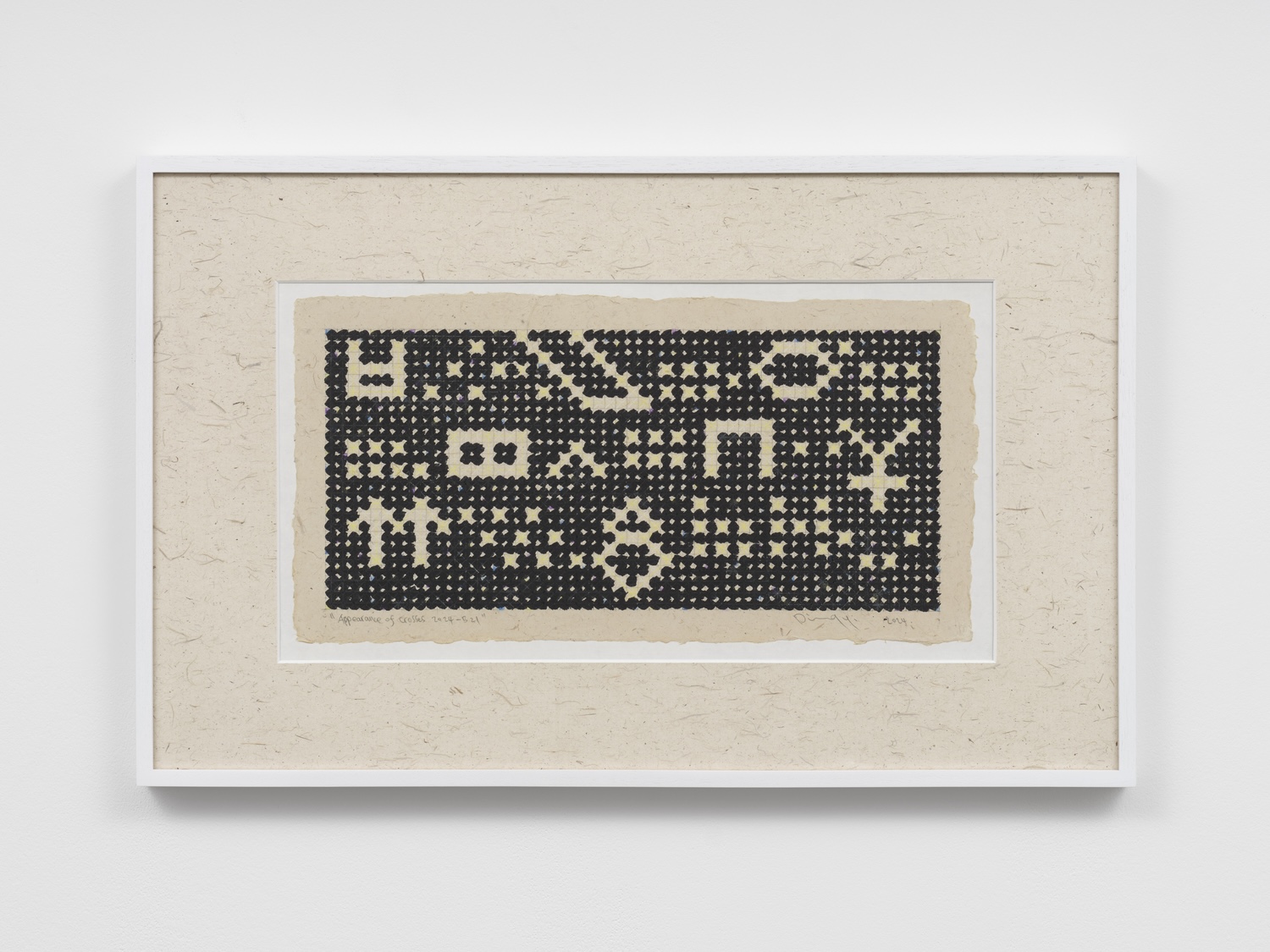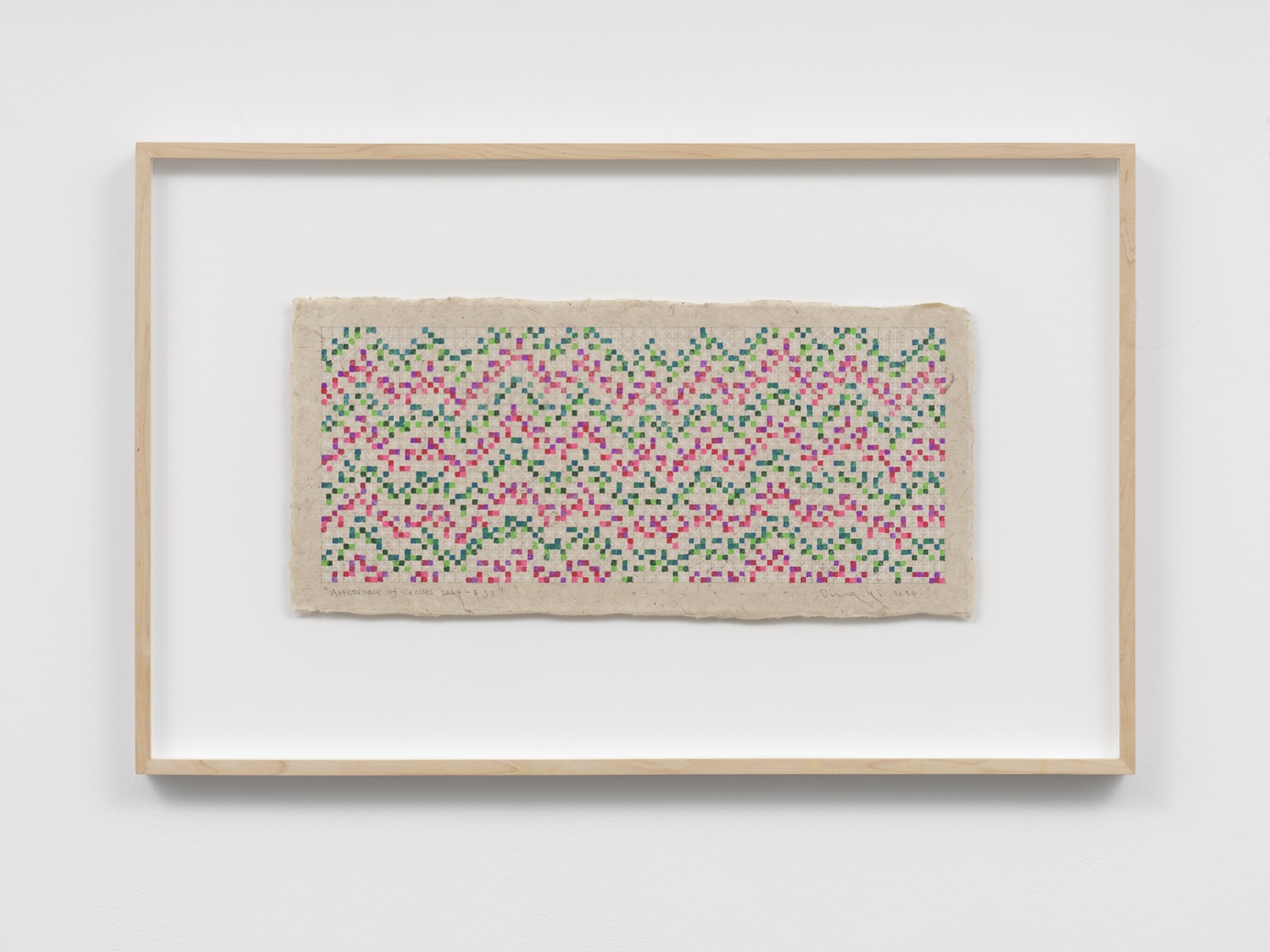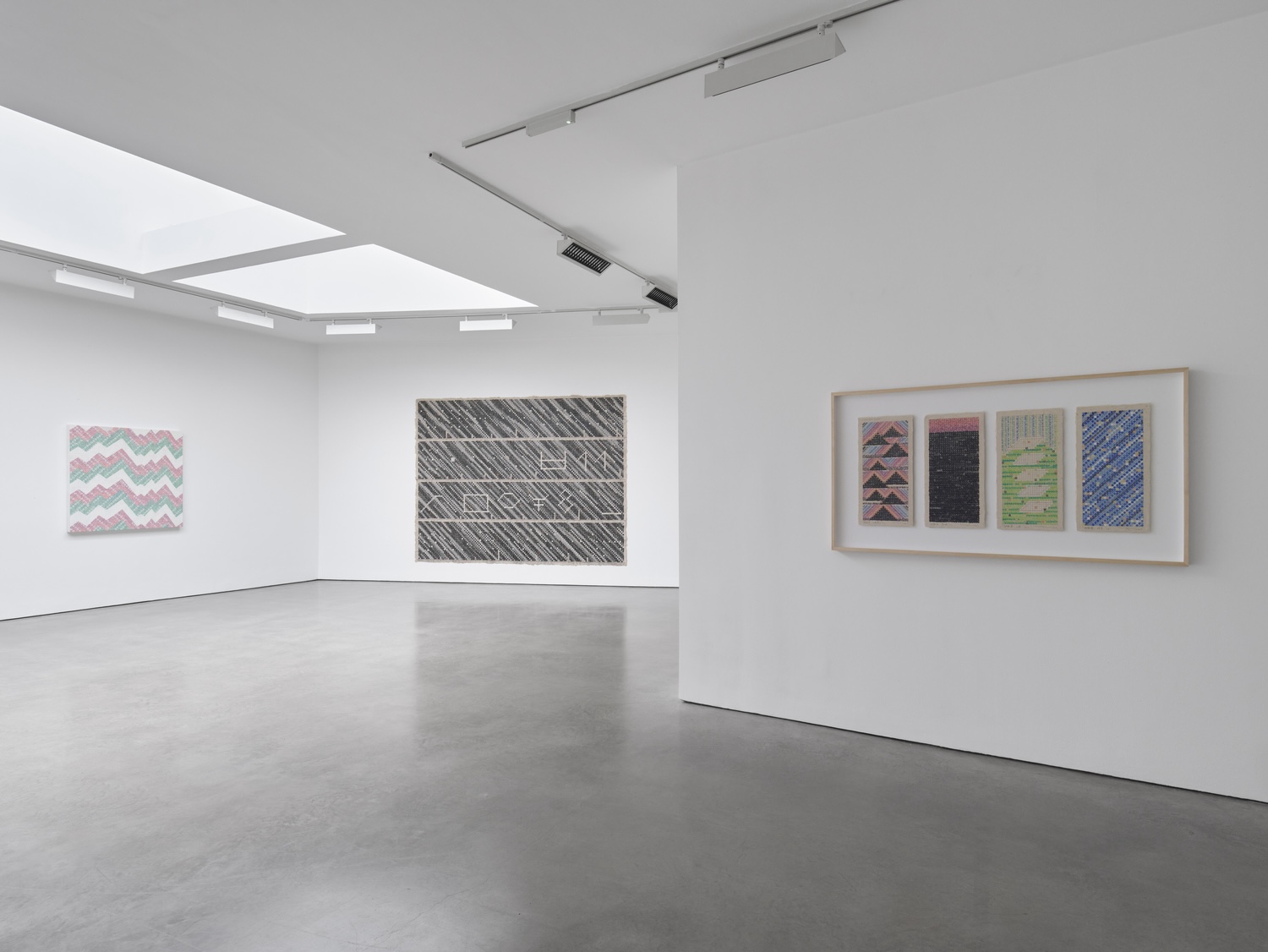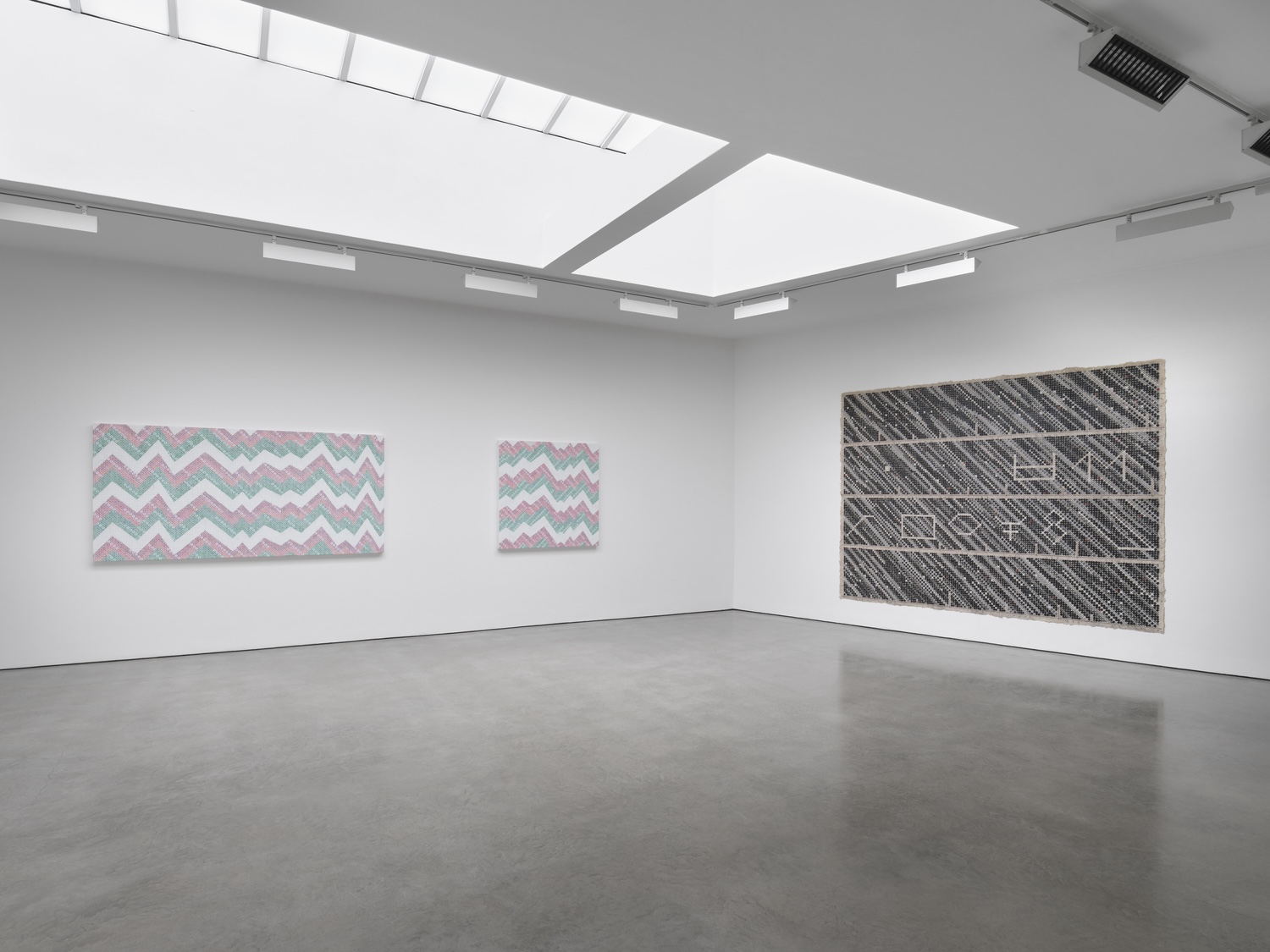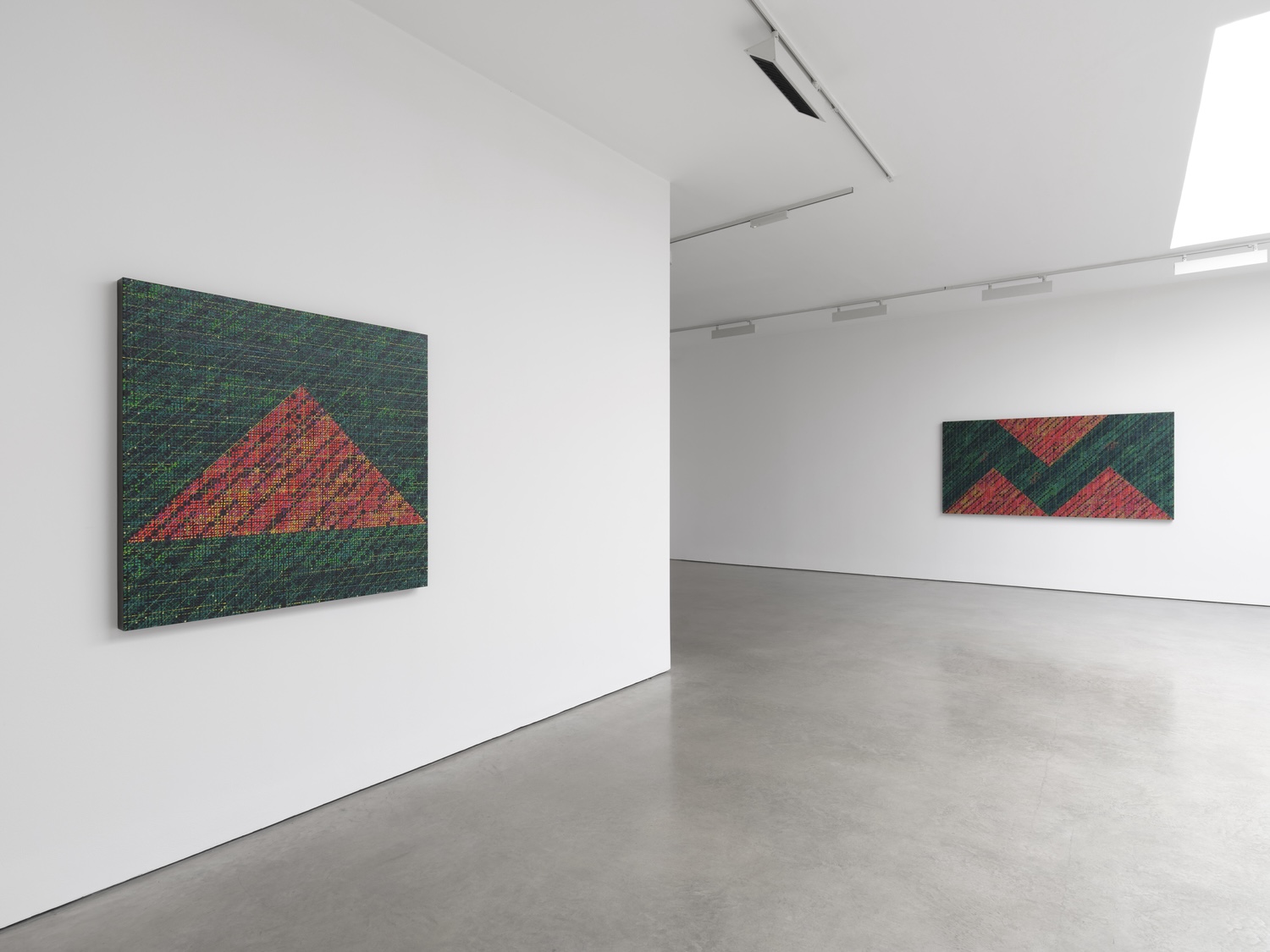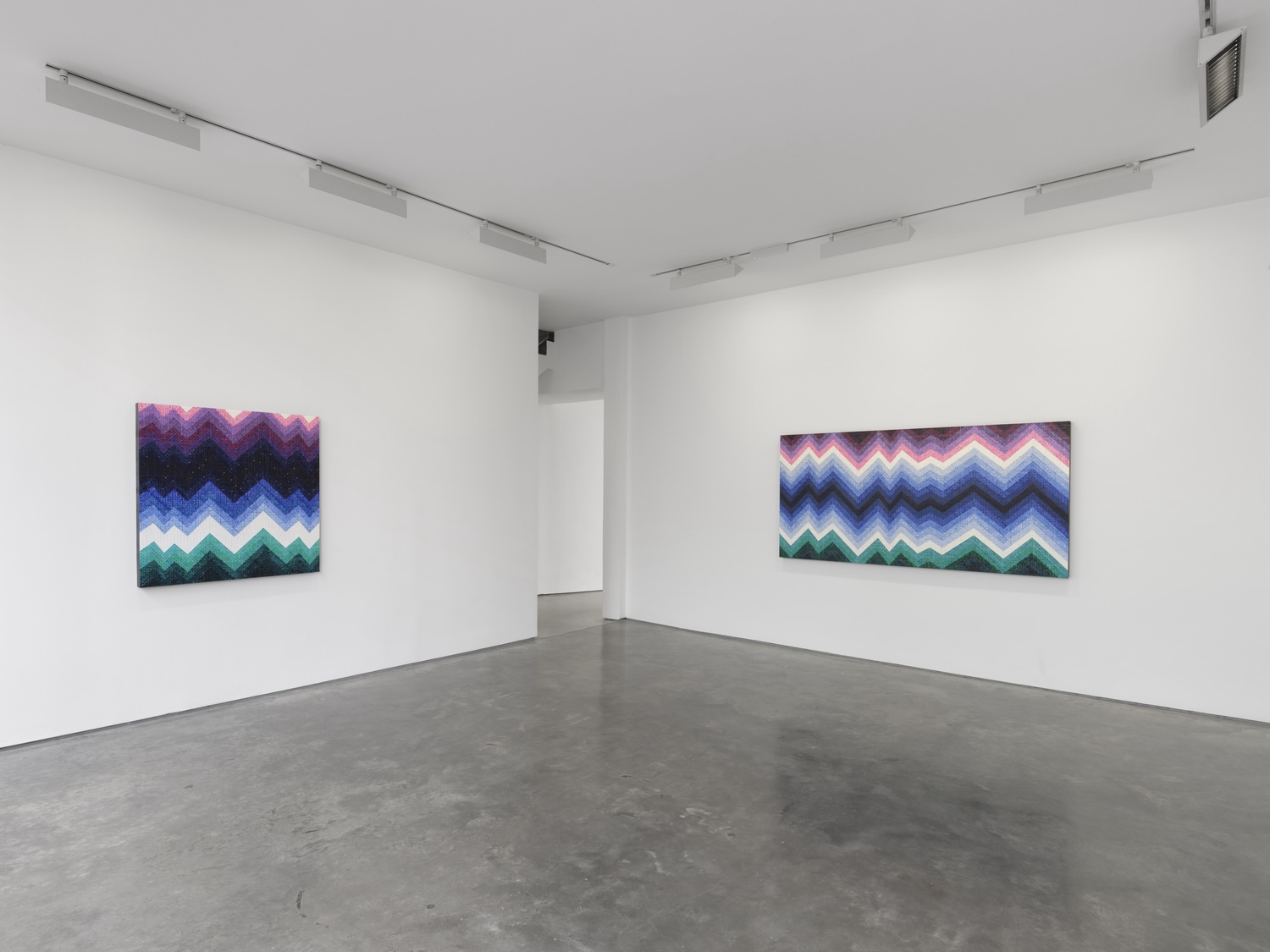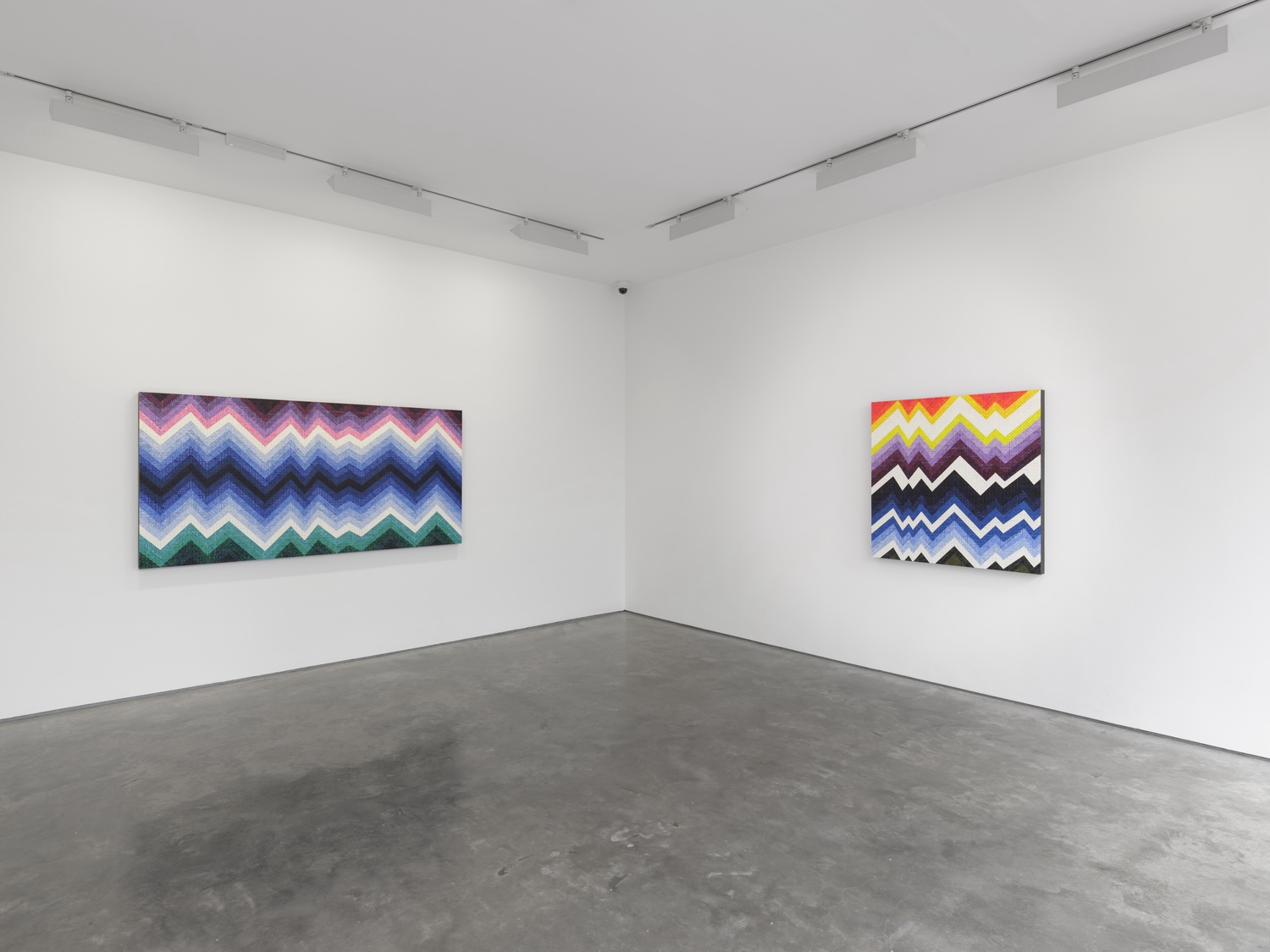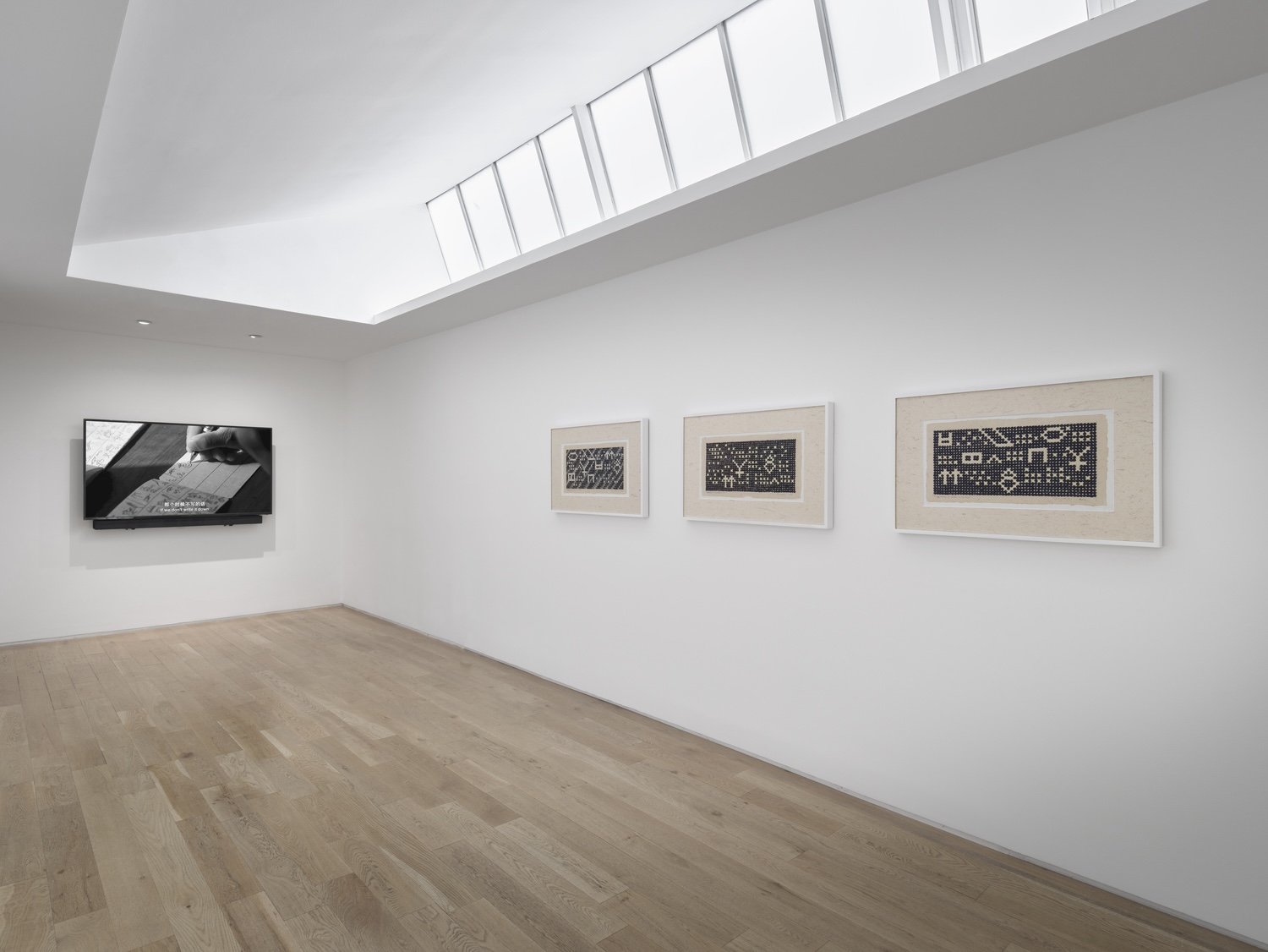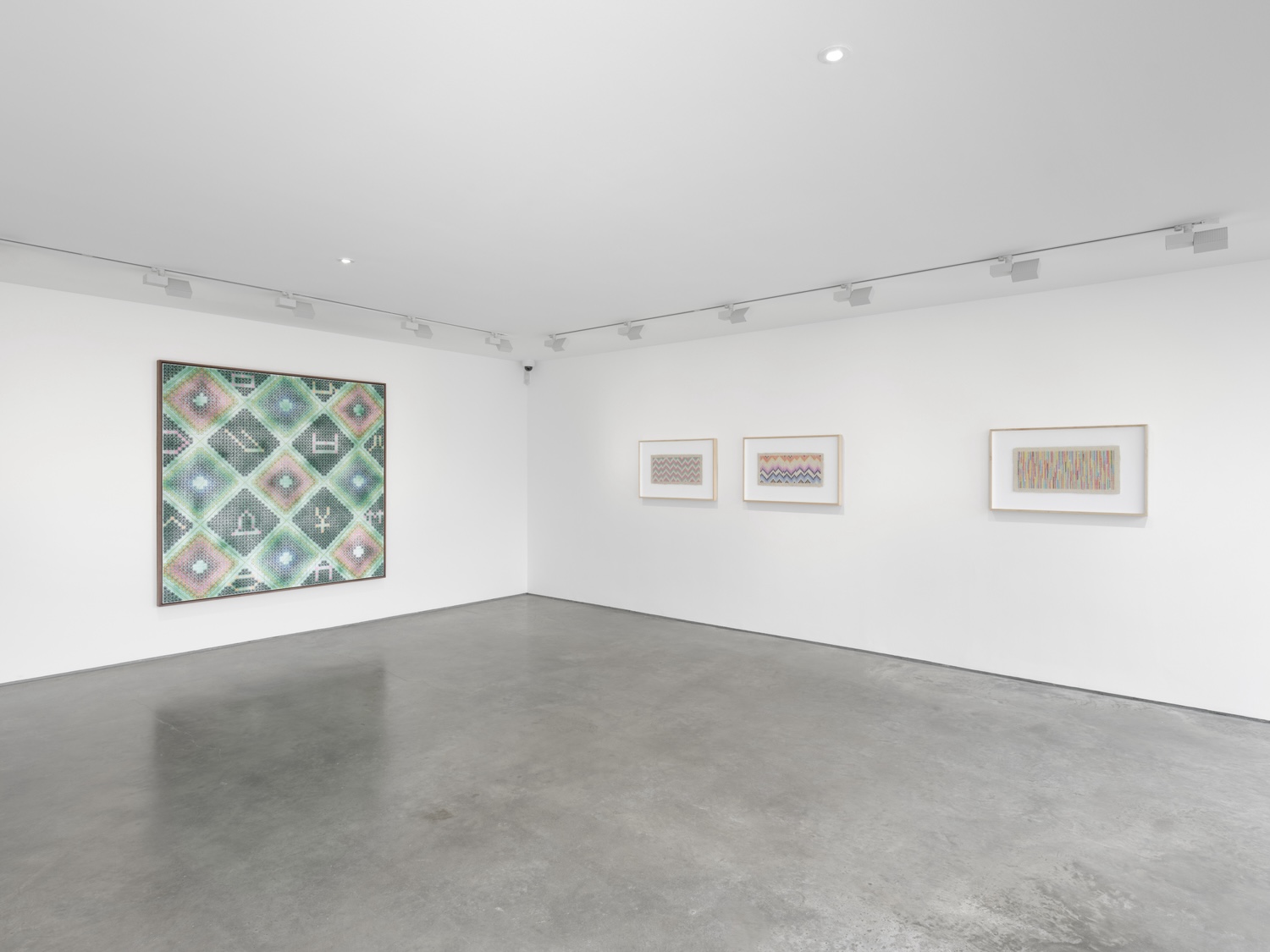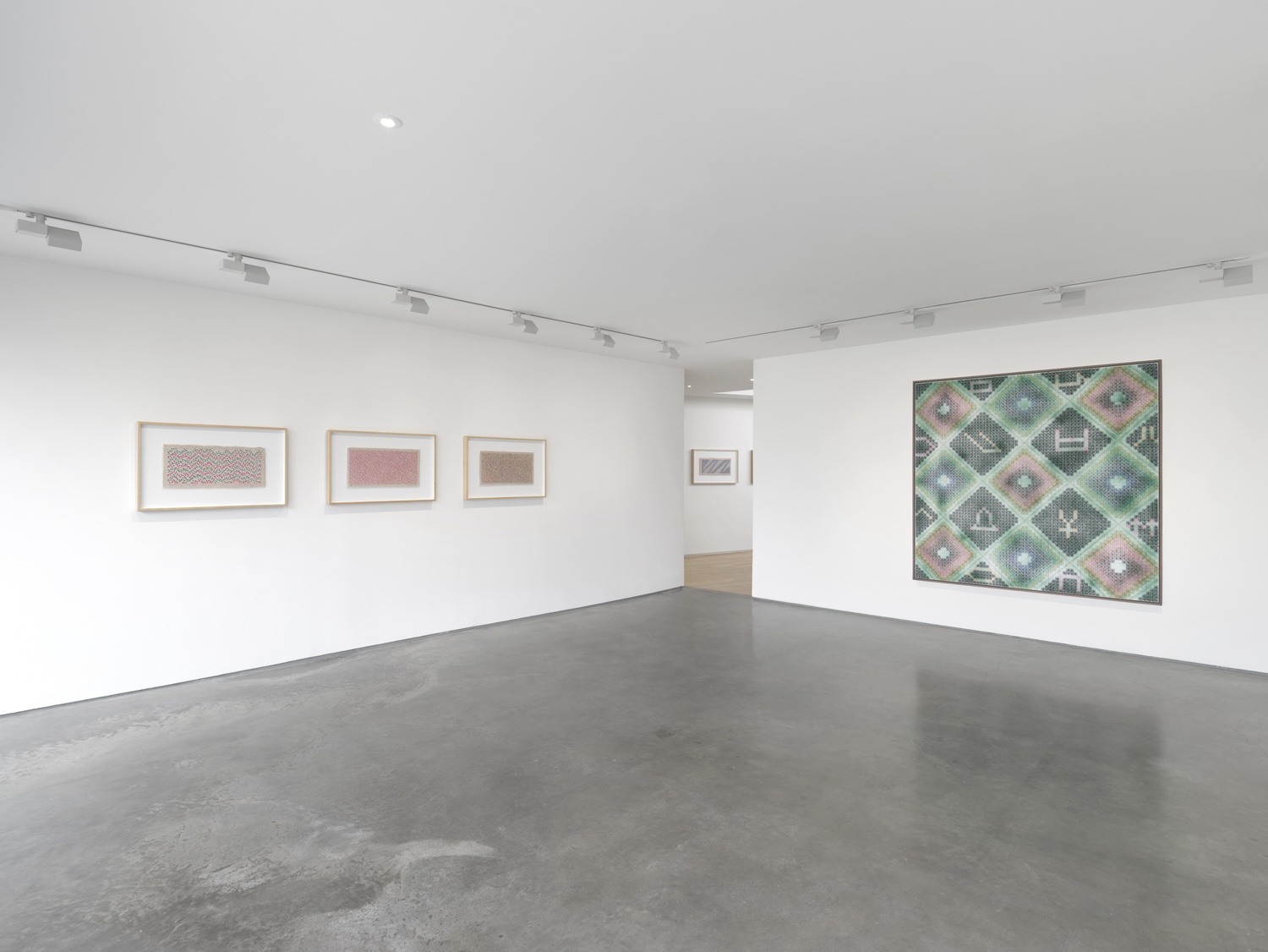For his inaugural solo exhibition at Lisson Gallery and his first return to exhibit in London in over five years, renowned Chinese abstractionist Ding Yi presents a new body of work ahead of Frieze week. This latest series is deeply informed by the history and cosmology of the Naxi people of Yunnan in southwestern China, offering a rich cultural and conceptual dimension to his distinctive visual language. In line with his larger corpus, the artist’s latest drawings and paintings employ a systematic iconography in the service of a layered, subjective response – a continuous act of translation rather than a fixed text.
In 1988, while a student at Shanghai University, Ding Yi adopted the cross, either in the form of a ‘+’ or ‘x’ symbol, as a leitmotif. Initially arranging crosses in strict grids, he later developed complex geometric patterns in fluorescent colours, producing works that mirrored the architectural and economic explosion of Shanghai in the late 1990s and early 2000s. Since 2011, Ding Yi has shifted toward a broader perspective, exploring themes of the cosmos, nature, and the universe, gradually moving beyond the strict rationality of his earlier work toward a more emotive and intuitive sensibility. Following his 2022 solo exhibition in Tibet, he began to engage more deeply with specific cultural and geographic contexts, with recent works reflecting a turn inward—toward spiritual reflection and contemplative states.
In 2024, following three research visits to Yunnan and in-depth conversations with scholars and Dongba priests, Ding Yi studied and internalised the texts and beliefs of the Dongba religion—an ancient tradition blending animism and Tibetan Buddhism. This belief system is preserved through sacred manuscripts composed in a unique pictographic script – the most significant and visually striking being The Road to Heaven. Used in funerary rituals, the long scroll depicts the soul’s symbolic passage from the earthly realm to the afterlife, and lends its title to this exhibition.
Drawing from the scroll’s visual and spiritual resonance, Ding Yi created a group of works executed on coarse-fibred Dongba paper using acrylic and water-soluble coloured pencil. These compositions reinterpret The Road to Heaven through his signature cross motif. The drawing transposes the Dongba writing system into a sequence of intricate schemes, each composed from a dense array of crosses. In this fusion of Dongba cosmology and his distinctive abstraction, Ding Yi invites viewers to perceive two worlds at once—entwined yet distinct in sensibility. Featured in the exhibition is The Road to Heaven 2024-B17, a four-panel work on Dongba paper. Each panel alludes to the transmigration of the soul through allegorical topographies: Nine Black Mountains, The Underworld, The Natural World, and Heaven.
The exhibition also features a suite of horizontal-format works on Dongba paper, continuing his iconic Appearance of Crosses series. For Ding Yi, works on paper hold a vital place in his practice, serving as both experimentation and refinement. In these, tiny crosses applied in various colours form mosaic-like compositions that oscillate between microcosmic and macrocosmic resonance. Blocks of dense black hatching – inset with constellatory motifs – echo the starry skies that have featured in Ding Yi’s works for two decades. Elsewhere, streaming blue diagonals conjure the two fundamental elements of life, according to the Naxi – ‘Qi’ (energy) and water, linking to the ‘Twenty-eight mansions’ of Naxi astrology: the nightly resting places of the moon.
A group of larger relief paintings, rendered in chiselled basswood, features tiered zigzags that evoke the sacred Hengduan mountains of Yunnan in the guise of psychedelic abstraction. Coloured diagonals offset the faint underlying grid, while bold geometry, as often in Ding Yi’s art, compresses a sense of the minute, the handmade and the contingent, reflected in the tiny carved compartments that constitute each painting.
Ding Yi defined the first two stages of his career in terms of ‘steadying’ (the cultivation of a formal language) and ‘overlooking’ (the application of that language to the rapidly evolving world around him). The third, ongoing stage is that of ‘looking up’ – of widening his horizons, both spatial and temporal, to the cosmos and its ancient conceptualisations. The mathematical construction of his works belies a deep interest in the idiosyncratic and irrational dimensions of human thought and cultural tradition. The cross itself – at once Modernist and pre-modern, personal and functional – encapsulates the beguiling duality of his art. As curator Cui Cancan has observed, the “Winding Path” of Ding Yi’s practice “has no terminus – it sways fiercely between the poles of locality and globalisation.” The series of work featured in this exhibition is also on view at Ding Yi: The Winding Path at Contemporary Gallery Kunming and Anthropology Museum of Yunnan University, China, until 9 November 2025.
